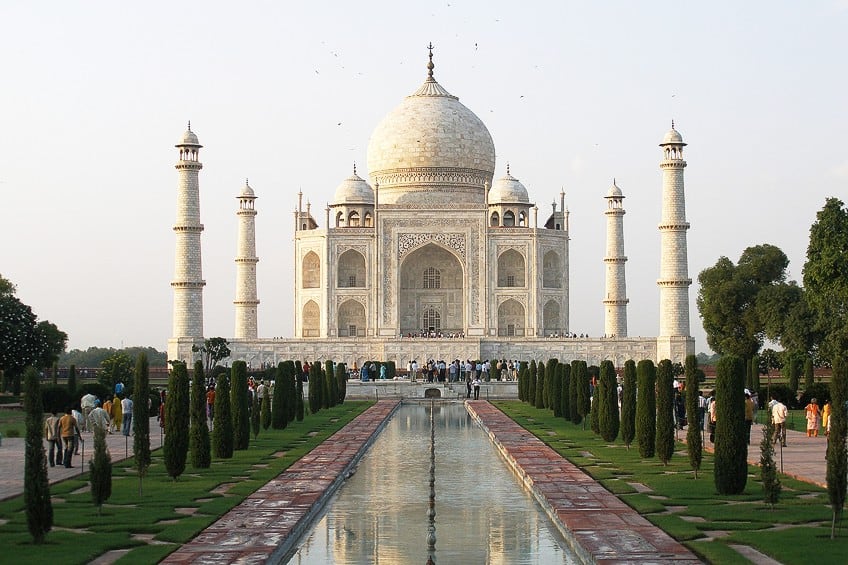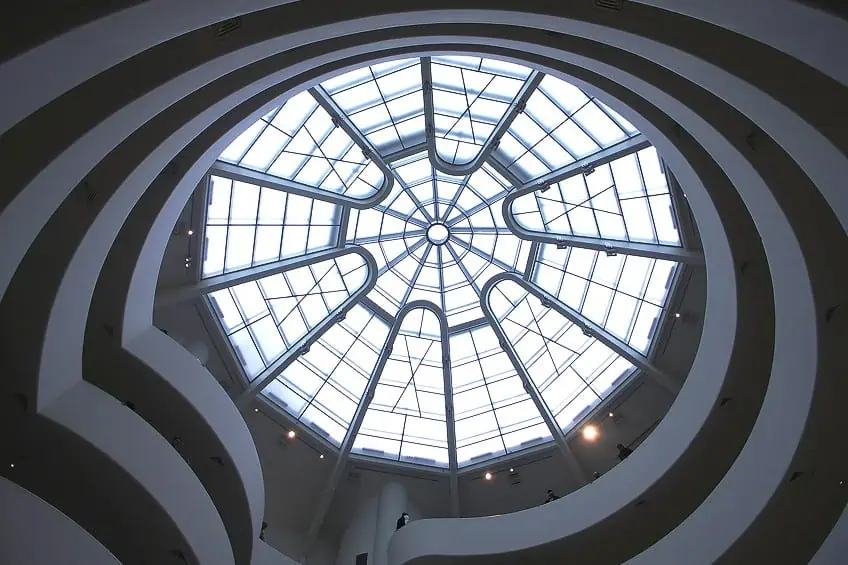What Is Architecture? – A Look at Architecture in Art
What is architecture? This is a good question and one that entails several other questions, because “what is architectural design?”, “is architecture art?”, and “why is architecture important?” are all very important questions that form part of the overall architecture definition that we will explore. So, keep reading to learn a little more about what architecture is and why it is so important!
What Is Architecture?
An architecture definition, at its most basic, would be that architecture is two things at once. We could be talking about architecture in the sense of specific types of architecture, in which case it’s a variety of buildings and structures that have a few specific characteristics that are unique to it. However, we could also be talking about buildings in general as all buildings entail architecture, as in the design of buildings and structures. Both of these entail buildings in some description and how we might classify those buildings.
Buildings are an integral part of human existence. We have been building structures for the last few thousand years of our existence.
Our earliest buildings would have been incredibly basic shelters, the likes of which no longer exist because they likely would have been incredibly flimsy and made from fundamentally weak materials. However, during the Neolithic Period of human history, we started to transition into a different way of being.

Once we started to change over to this new way of existence, we stopped our more nomadic hunter-gatherer lives with its simplistic shelters and started to construct more permanent dwellings that we could inhabit. This allowed us to remain far safer in each other’s company and to hide from the elements. A house made of mud bricks or stone is going to be a far better existence than a makeshift hut that collapses because the wind was a little hard today.
Buildings soon came to encompass everything though. We do not only use buildings as residences.
Instead, we use them for our communal spaces, our places of worship, our educational facilities, our hospitals and clinics, our shops and marketplaces, our workplaces, and, of course, just as a place to live. Buildings perform necessary functions for us, but humans are also artistically inclined animals, and we don’t want something purely functional. So, can architecture be more than just that? Or is architecture merely buildings where we can hide from the elements?
What Is Architectural Design?
Once upon a time, there was very little need for a formalized kind of architectural design. Architecture was rather simple. You need to make walls, something to support the roof, and a roof. It’s pretty simple, but things have changed significantly since the earliest days of architecture. Instead of it being an immensely simplistic form, architectural design has become increasingly complex as we have developed new construction technologies that have changed the way we interact with buildings in general.
Later architecture, once we’d learned how to construct larger structures out of materials like stone, required a lot more, and things have become even more complex the closer to the present day we go.
The earliest architectural design was practically inseparable from the construction of the building, but by today, architectural design has become a combination of design, planning, research, and construction of buildings. So, if you wanted to pose the question: What is architecture design? The answer would be that it’s a lot of things.

Architecture takes several things into account. It is an incredibly precise and science-oriented activity, as buildings that have been designed should not fall over and kill the people who happen to be standing inside them. However, architecture also entails a view toward artistry. Is architecture art? This is a question that gets bandied about relatively often, and while there may be debates about it, at the very least, architecture is a form of functional art, and certain architectural styles have been far more dedicated to what we may ordinarily call “art” than others.
For instance, one may call a more Modern architectural style less “artistic” than something in the Baroque style, but that would be up to personal taste.
What Are the Limits of Architecture?
Discussing architecture as an art form is a topic all on its own, so we aren’t going to focus on it here. Instead, there is one other major area in which architectural design is important: business. We don’t like to think of things that are integral to human existence as business-oriented, or at least many of us don’t, but architecture has involved significant expenses for the last few thousand years.
The earliest buildings may have been the kind of thing that anyone could theoretically build with enough time, but the same cannot be said of a skyscraper. You need hundreds of workers, massive machines, and expensive building materials.
The business side of things is only one of the many things that stand in the way of architecture and restricts what it can and cannot be. A building cannot expand its budget forever, it cannot be whatever it wants to be because there’s usually a client on the other side of the transaction who wants a specific function out of the building, and there are also external factors, like regulations that place restrictions on all manner of things, like building height. Architecture is not a freeform medium in which anything can be done. It must be tempered by the realities of the world.

Furthermore, there is no one-size-fits-all approach to architecture. Every single building in existence needed to be built according to whatever was specific to that area. The site on which something is built needs to be treated differently based on the kind of ground underneath it, or there may be changes that need to be made to a building because of the socio-economic climate of whatever is around it, or the physical environment, such as locations that are more prone to flooding may require a different approach than something built somewhere on higher ground. The context of the location in which architectural design is applied is incredibly important.
Lastly, when it comes to the contemporary era, architectural design entails several things. There needs to be an initial design for a building, and that design then needs to be approved by whoever is paying for it, and only then can the finer details be developed.
However, that’s all still highly conceptual. After that, those plans need to take into account the construction of the building itself, such as who to hire and where to find the materials for it, and then there’s the building of the structure itself. All of this forms part of architectural design, and it also falls under the direct control and responsibility of an architect.
What Is an Architect?
What is an architect anyway? Well, the word architecture comes from the Latin word artitectura, which is just the word that describes what an architect does. In so far as architecture definitions go, it is a rather simplistic one. However, “architect” comes from the Ancient Greek term arkhitekton, which meant chief builder. It is the person in charge of the construction of a building or structure. This means that architecture and architects are inseparable from one another.
The contemporary architect is the person who plans and designs the buildings that will eventually be constructed. They are trained in a variety of fields, such as engineering, planning, and architecture in art. This allows the architect to develop the kind of structure that needs to be built. They are extensively trained and prepared for the job that they will need to fulfill, but has that job always been the same?
Architects have changed significantly since their earliest existence. In the earliest years of human existence, the term “architect” provided no real distinction between the person who designed and the person who built the building. They both planned it out, gathered the materials, and built the structure. They may have had a team, but they were directly involved with the construction itself. This started to change in the 1500s.

In the 1500s, we developed technologies like penciling. Better paper allowed us to plan things more in advance. We could start to develop far more intricate designs that utilized both linear and lateral thinking. The earliest architects thought purely in terms of linearity; buildings were purely functional, but then there started to be a push towards making things that were more geometric or artistic in their design. Is architecture art? It doesn’t really matter because regardless of any debates, there has always been architecture in art and art in architecture. They have complemented each other to develop something new, and architects have adopted artistic principles for many centuries.
Once we proceed all the way to the modern day, we can even see distinctions between different types of architects as we have become more and more diversified in what we want and how we specialize.
There are design architects who focus on the design itself, and then there are more technical architects who focus on the construction. Additionally, interior decorators and landscape architects are also types of architectural fields that contribute to the structure as a whole. Architects may have once been indistinguishable from the person who built the house, but today, that person has become separated from the construction to instead focus on planning and design. This diversification has allowed for far more complex structures as architects can focus on the design elements and never need to learn the specifics of cement mixing or brick-laying. They just need to know that these things can be done by someone.
Why Is Architecture Important?
This is our final question to ourselves. We know what architecture is and what architects are, but does that mean that any of this is important? What is architecture is a question that may need to be supplemented with whether architecture, as we often view it, even matters. Sure, we could automatically respond that architecture is immensely important because otherwise, we’d all be living in simplistic mud huts, caves, or holes in the ground. So, it certainly has improved our lives even if we argue over its fundamental importance.
We opened this article by looking at how buildings are used for so many things, like homes, hospitals, and shops. These are all important to our lives as human beings. There are private and public places in this world, and they both require architectural design of some description.
However, we have different expectations for both. Private dwellings are often quite simplistic in their design, to the point where many of them may not even require a dedicated architect. Most houses are essentially rectangular boxes with holes cut into the sides for windows and doors, but public places may be quite different. While it may take relatively little skill to lay out a typical house and build it, the same cannot be said of office buildings, skyscrapers, or large structures that need to reflect a certain belief system.

Architects and implicit architectural design become inherently necessary as soon as buildings gain any level of complexity beyond a box with bricks and a roof. In addition, so many architectural styles have come and gone over the years, and each of them requires someone who knows what they’re doing with the design of the structures in question.
If someone does not know how to design load-bearing columns in the Neoclassical style, then the building won’t work. If someone wants an Art Deco design complete with artworks on all the walls and façades, then you’d need an architect for that.
If you wanted to have a Postmodern design with intricate, unnatural shapes, you would definitely need an architect for that. There is both a functional and artistic side to architecture, and an architect can encompass both of these strands. So, what is architecture? It’s the design and planning of buildings and structures of any level of complexity above a box on a piece of land.
Thus concludes our discussion of architecture. We hope that we answered this question for you: what is architecture? It’s a question that appears immensely simple at first, but once you start to look at it, you start to wonder about the exact specifics of certain definitions. Ultimately, architecture is about aiding the construction of the buildings that surround us in our daily lives, so it’s quite an important thing.
Frequently Asked Questions
What Is Architecture?
Architecture is both the name for buildings in general, but it also, in this case, refers to the actual design of buildings in the first place. There are many different varieties of architecture, but they all ultimately serve the dual purpose of some level of functionality and artistic expression.
What Is Architectural Design?
This is a good question. What is architecture design? It is the planning and designing of buildings and other structures that need to be built. This ultimately entails a variety of things, like the physical layout of the buildings, the taking into account of limitations, the determination of which materials to use, and even the finding of those who can do the construction itself.
Why Is Architecture Important?
This can be stated quite simply: we need to live somewhere. Architecture entails the design of buildings, and buildings are the places where we live, eat, work, shop, and pray. We cannot separate buildings from architecture and so if buildings are important, and we’d generally agree that they are, then architecture must, by proxy, be important too.
Is Architecture an Art?
This is one of those questions that elicits many strong responses. There are those who will call architecture merely functional, and there are those who will demand that it entails artistic expression and is therefore art. So, is architecture an art? Well, it certainly is a form of functional art. This means that it is inherently a functional thing, but it does involve artistic practice. Hopefully, this should partially appease those who engage in this debate.
Justin van Huyssteen is a writer, academic, and educator from Cape Town, South Africa. He holds a master’s degree in Theory of Literature. His primary focus in this field is the analysis of artistic objects through a number of theoretical lenses. His predominant theoretical areas of interest include narratology and critical theory in general, with a particular focus on animal studies. Other than academia, he is a novelist, game reviewer, and freelance writer. Justin’s preferred architectural movements include the more modern and postmodern types of architecture, such as Bauhaus, Art Nouveau, Art Deco, Brutalist, and Futurist varieties like sustainable architecture. Justin is working for artfilemagazine as an author and content writer since 2022. He is responsible for all blog posts about architecture.
Learn more about Justin van Huyssteen and about us.
Cite this Article
Justin, van Huyssteen, “What Is Architecture? – A Look at Architecture in Art.” artfilemagazine – Your Online Art Source. May 2, 2023. URL: https://artfilemagazine.com/what-is-architecture/
van Huyssteen, J. (2023, 2 May). What Is Architecture? – A Look at Architecture in Art. artfilemagazine – Your Online Art Source. https://artfilemagazine.com/what-is-architecture/
van Huyssteen, Justin. “What Is Architecture? – A Look at Architecture in Art.” artfilemagazine – Your Online Art Source, May 2, 2023. https://artfilemagazine.com/what-is-architecture/.



